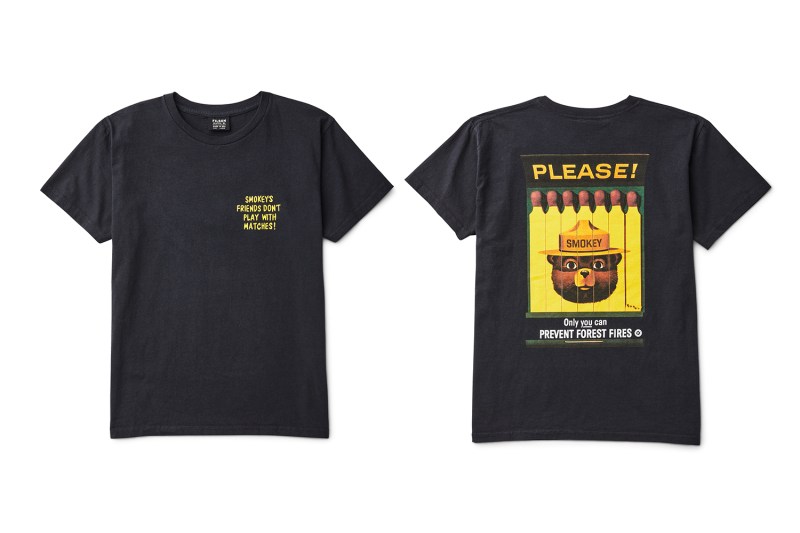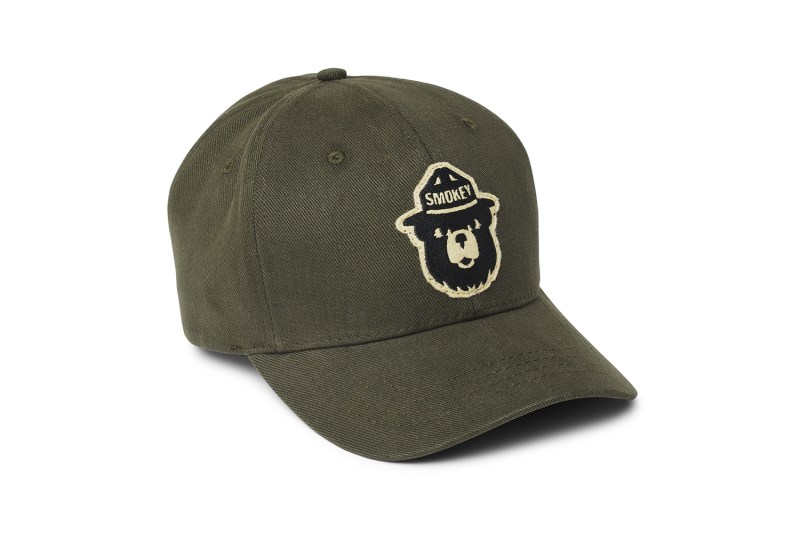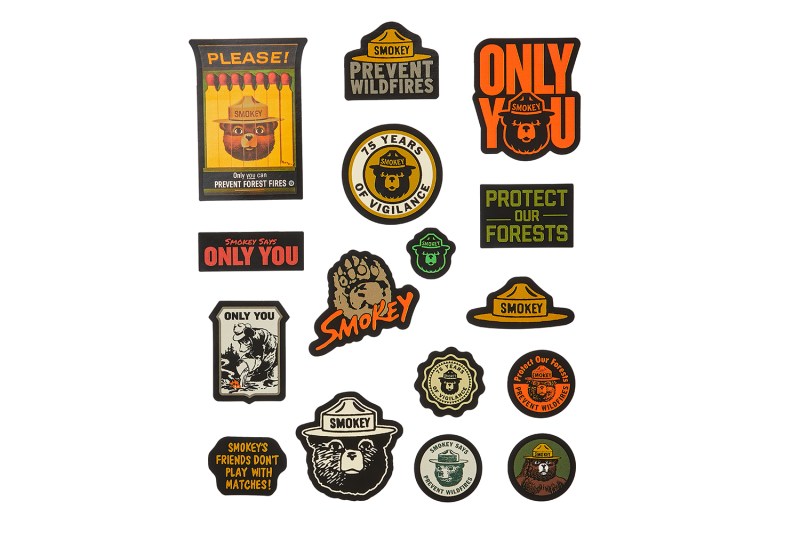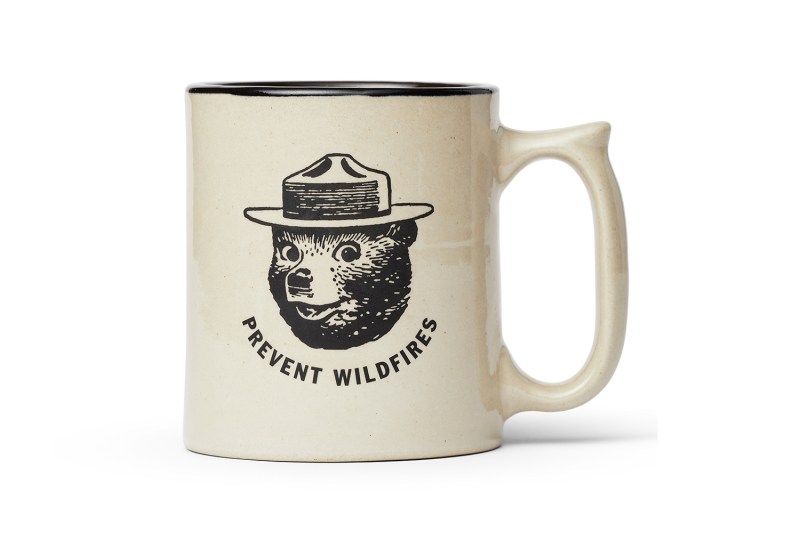Happy 75th birthday to Smokey Bear! While his cake will not have candles, American heritage outerwear company Filson is making sure there are plenty of party favors to celebrate. Filson launched a limited spanning shirts, boxers, mugs, and more as a playful way to honor Smokey and help outdoorists dress with a message.
“So much of the world of Filson is immersed in the great outdoors. It was a natural fit for us to invite [Smokey] into our brand. His message was one that we felt deeply given our close history with the United States Forest Service. He’s influenced generations and has endured decades. He evokes a sense of nostalgia. Smokey is a beloved American folk hero who instills a sense of pride and care for our wild places,” Filson chief creative officer, Alex Carleton, tells The Manual.

Each piece rocks the classic black bear profile in different iterations used by the Forest Service over the last 75 years. In a word, the color pallet for Filson’s capsule is woodsy. Dark Mushroom, Service Green, Olive Gray, and Faded Black bring Smokey’s forest home to the forefront, making the pieces feel less like a farce and more like every-day wear.
The aesthetic is paired-down and subtle, but anyone can recognize Smokey’s face and be reminded of his slogan: Only You Can Prevent Wildfires. It’s basically a meditation for those who love camping and the great outdoors. Today, the Smokey Bear Wildfire Prevention campaign is the longest-running public service advertising campaign in U.S. history. Smokey’s furry face also holds protected status by U.S. federal law.

Smokey’s milestone 75th birthday and the archival graphics used in Filson’s collection got us wondering how this bear became the poster child for wildfire prevention. It’s a crazy story that begins with wartime advertising …
Following the attack on Pearl Harbor, Japanese submarines surfaced on the coast of California exploding an oil field near Los Padres National Forest. There was an overarching fear of more attacks, paired with anxiety that these shells could ignite raging wildfires.
The Cooperative Forest Fire Prevention (CFFP) program was born in 1941 to inspire Americans to take ownership in the prevention of fires, with the first slogans being more political than recreational: “Forest Fires Aid the Enemy,” and “Our Carelessness, Their Secret Weapon.”

The following year, a seemingly unrelated cultural phenomenon took place: Walt Disney released the film Bambi. Forests and their animal creatures were endeared by the American public and Disney loaned the film’s characters to the CFFP program for a new poster. After a year, the CFFP had to come up with their own animal star.
Smokey the Bear appeared on his first Forest Service poster in 1944, putting out a campfire with a pail of water. Artist Albert Staehle depicted Smokey in a pair of blue jeans and a ranger’s hat.
A real black bear rescued in 1950 became the living, breathing embodiment of Smokey Bear, and come 1965 Smokey Bear received so much fan mail that a unique zip code was designated for him: 20252. The U.S. President is the only other person to have a private zip code. So yeah, he’s sort of a big deal.
Filson’s Smokey Bear collection pays homage to the different faces and sayings of Smokey direct from the archives and officially licensed: that means no bootleg or knock-off graphics.
Across the 16 pieces are blankets, short sleeve t-shirts, long sleeve shirts, pins, a Nalgene water bottle, knit beanie, cap, patch, hoodie, and mug.

It’s fitting that Filson would be trusted to design a Smokey capsule, seeing as their reputation for quality outdoor wear stretches back to the 1800s, covering outdoor homesteaders and fortune hunters during the gold rush.
But Filson’s Smokey capsule (which has been around since 2016) also goes deeper than plain merch, pairing with a massive “Protectors of the Forest” informational campaign that shares stories from badass wildland stewards like firefighters, rappel crews, pioneers, and Native American fire crews, plus details from the most cutting edge wildland fire research, how to become a wildland firefighter, and ways to donate.
We feel good about that. Sporting a Filson Smokey shirt not only celebrates Smokey, but advocates for continued work and personal responsibility to prevent wildfires. The U.S. Department of Interior says about 90% of wildland fires are caused by people (versus 10% from lightning or lava), so it’s still a rampant issue.
Dress with a message and don’t let your campfire go unattended. You can purchase items from the collection below.
Editors' Recommendations
- The best long-distance bike trails across the U.S.
- Take a break at one of these U.S. National Parks this winter
- Dispersed camping is your way to camp for free throughout the U.S. (seriously)
- The 10 best ski resorts and mountains in the U.S.
- Meet the U.S.’s oldest ski mountain, tucked away in Steamboat Springs, Colorado


